Back in 2012 this magnificent late 18th century pump on Cornhill was in a very sorry state, slowly rusting away …
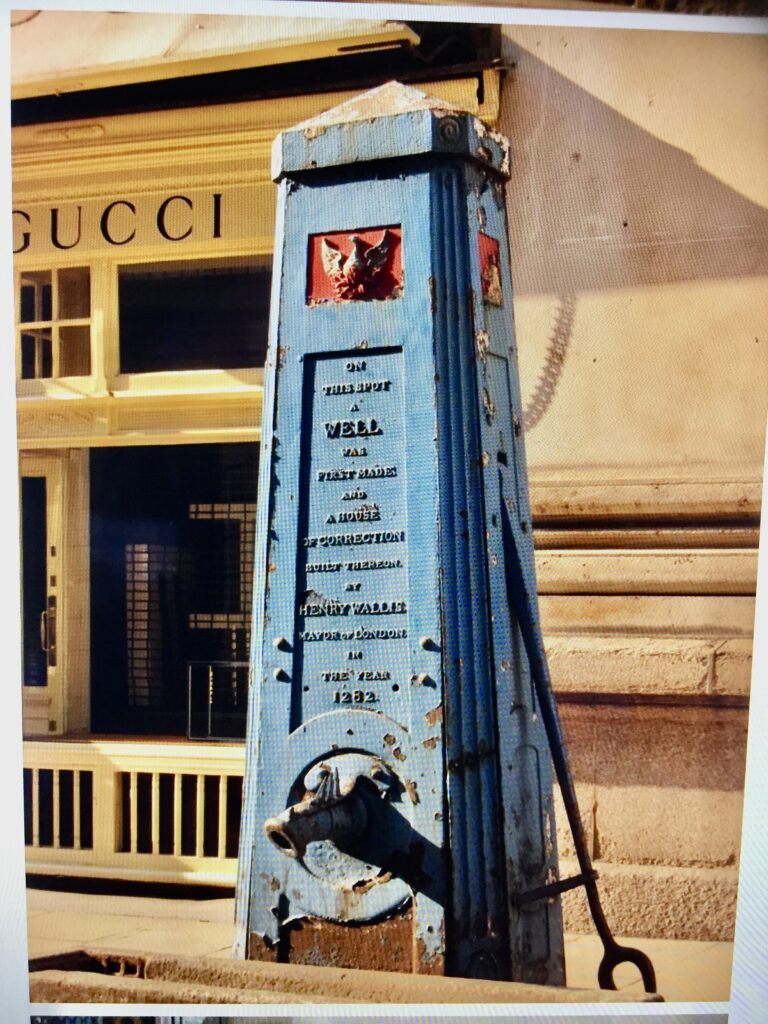
The pump in 1800 …
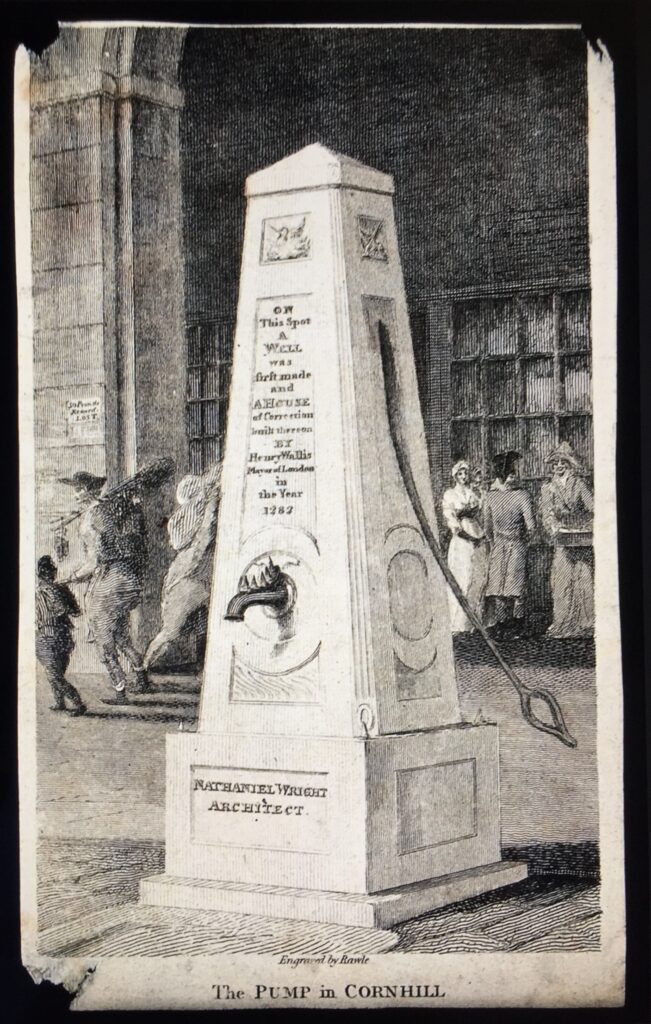
Now it has been restored to its former glory (EC3V 3LL) …

Two sides of the pump record its history. This is the side facing the pavement …
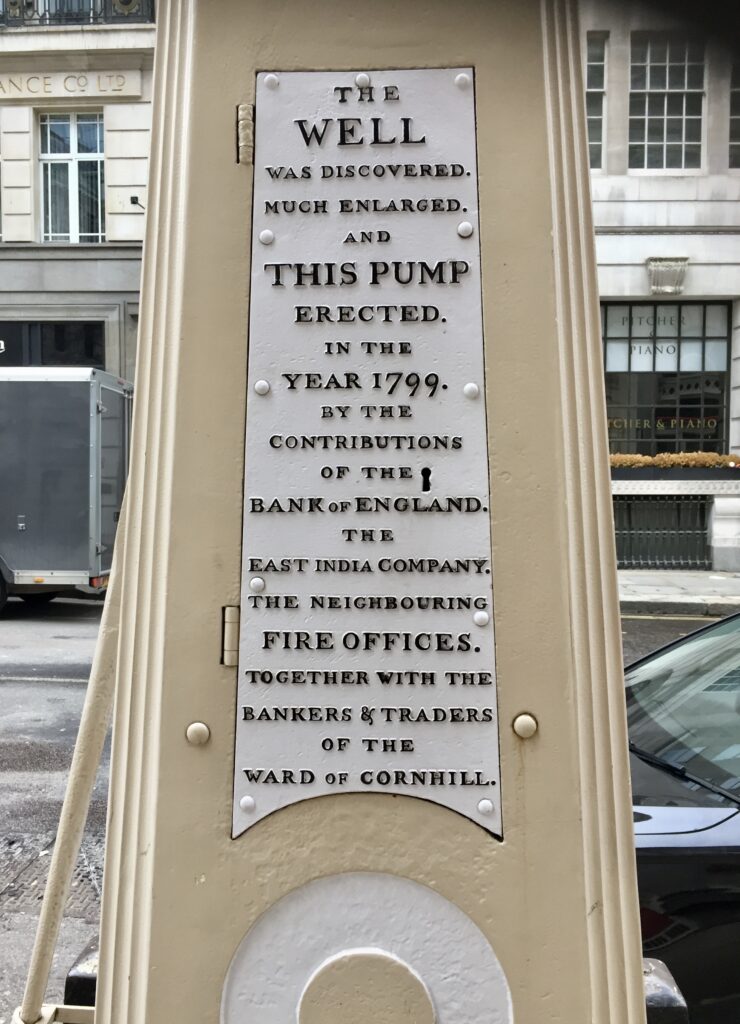
The ‘neighbouring fire offices’ were insurance companies who made sure that passers-by learnt of their generous contributions by incorporating their emblems into the pump’s design. It was, of course, also in their own interest to have a reliable source of water should there be an outbreak of fire. There had been a particularly ferocious fire in nearby Change Alley in 1748 with many buildings destroyed. You can read more about it in my blog More City Courtyards and Alleys – Change Alley.
The Gentleman’s Magazine of 16 March 1799 tells the pump’s story in a little more detail …
By the sinking of the pavement nearly opposite the front gate of the Royal Exchange a very large deep well of great antiquity has been discovered. The water is of excellent quality, and the ward of Cornhill propose erecting a pump near the spot… What is remarkable, the top of the well was not secured by either arch or brickwork, but only covered with planks.
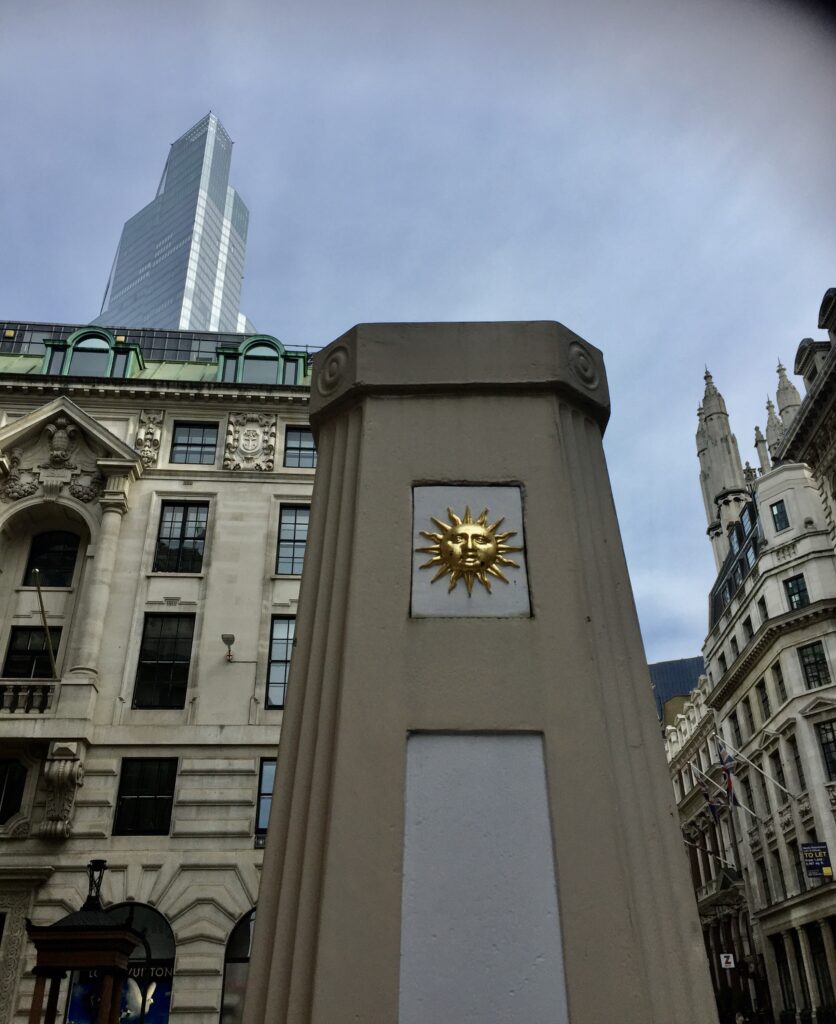
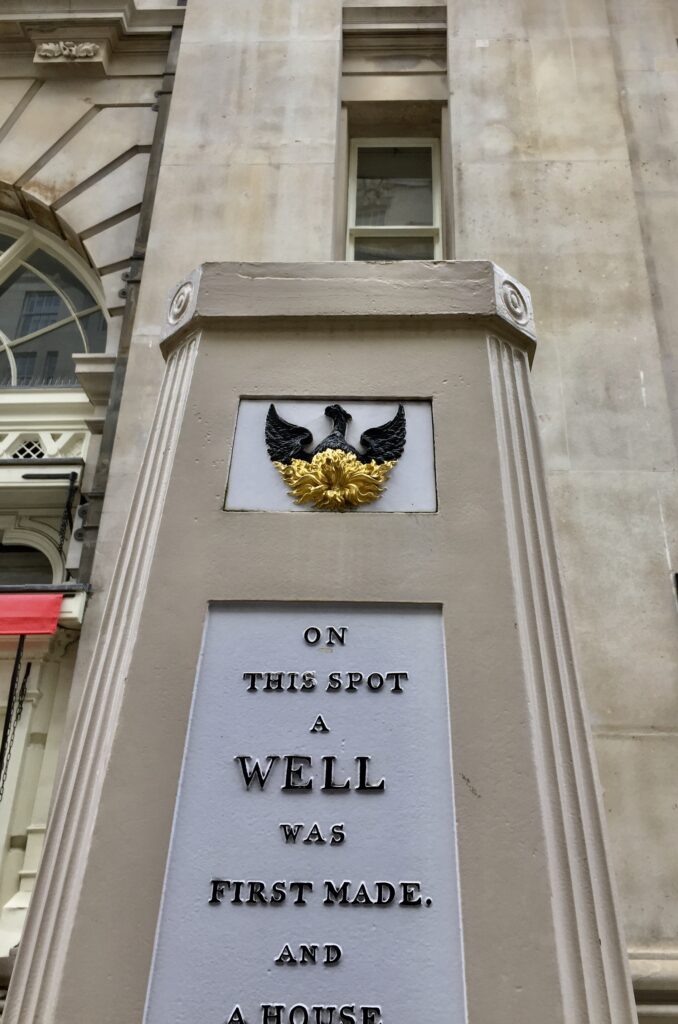
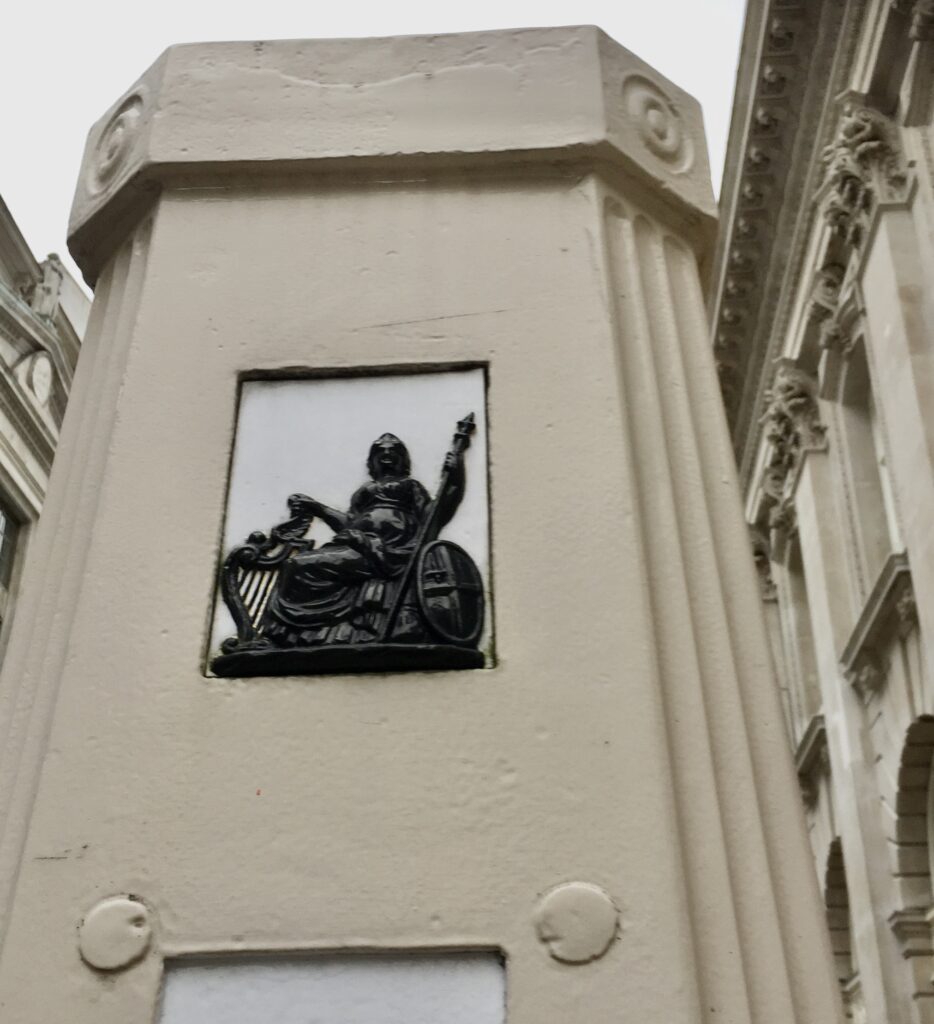
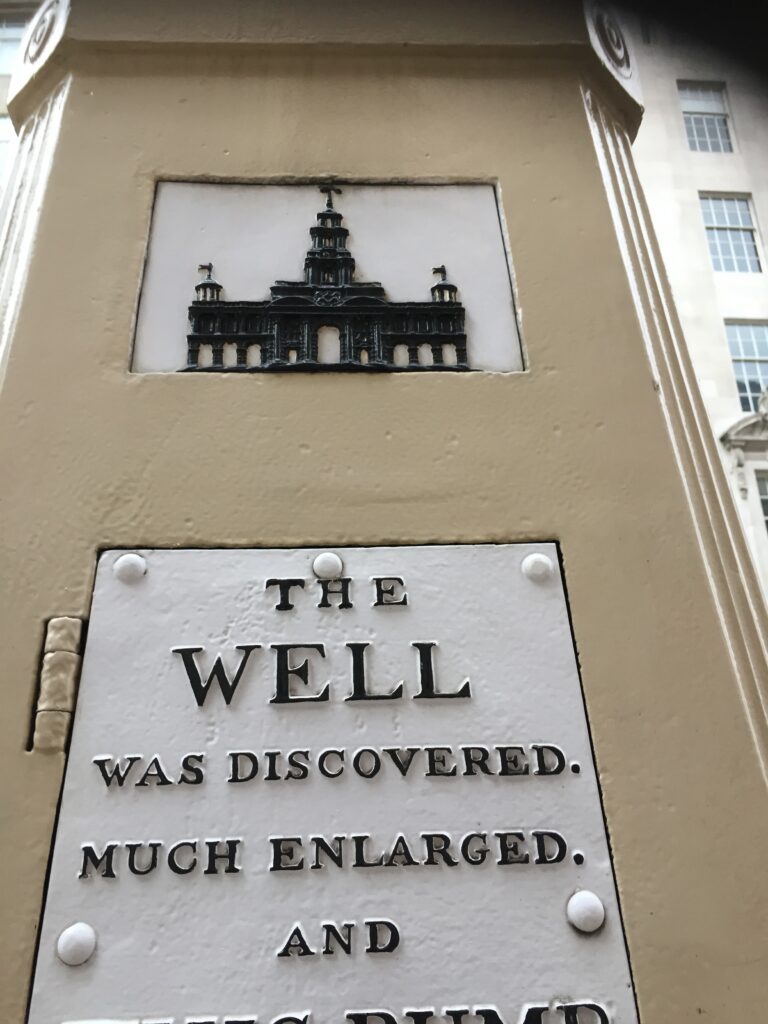
This is the inscription on the side of the pump facing the road …
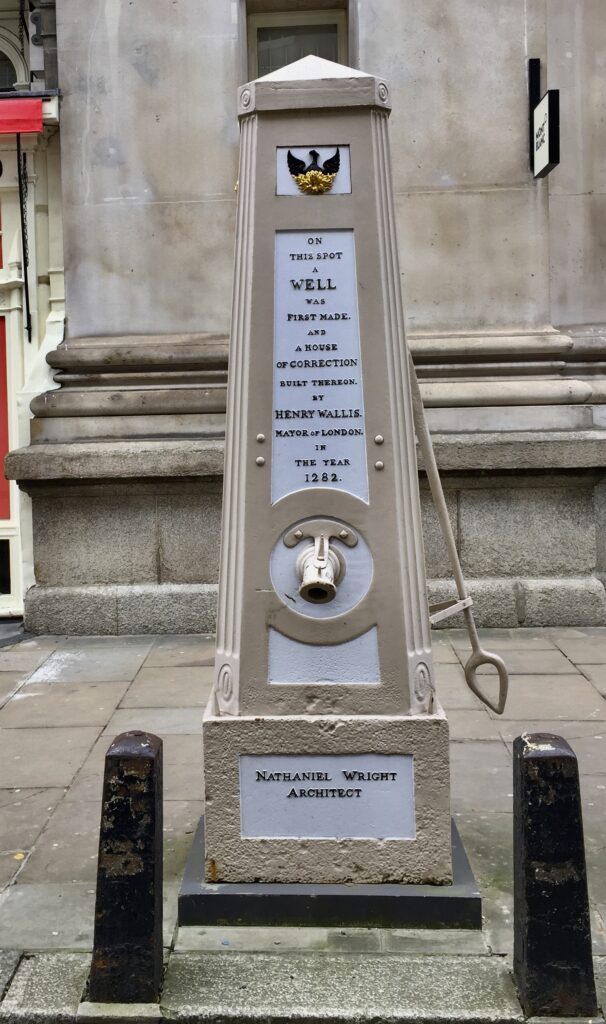
It refers to a well and a ‘House of Correction built thereon by Henry Wallis Mayor of London in the year 1282’. Also known as Henry le Walleis and Henry le Waleys, he was elected Mayor an impressive five times and was an incredibly active and creative individual. You can read more about him here and here.
The House of Correction was, according to one chronicler …
… to be a Prison for Night-walkers, and other suspicious persons, and was called the Tunne upon Cornhill; because the same was builded somewhat in fashion of a Tunne (barrel), standing on the one end.
Anyone walking about the City at night came under suspicion since at sunset all fires and lights were extinguished and great peals of bells heralded the closing of the gates in the city wall until dawn. Night air was known to be unhealthy. It was therefore believed that those who walked in it were, at best, eavesdroppers at neighbours’ windows or at worst potential burglars, murderers or prostitutes. They would be held at the Tunne until morning and then brought before a judge. For further reading on the subject I recommend Matthew Beaumont’s fascinating book : Nightwalking: A Nocturnal History of London. You can read more about the Tunne here in British History Online including details of the nasty punishments meted out to women ‘taken in fornication or aduouterie (sic)‘.
I suppose the spikes on the spout are there to stop people resting their bottoms on it …
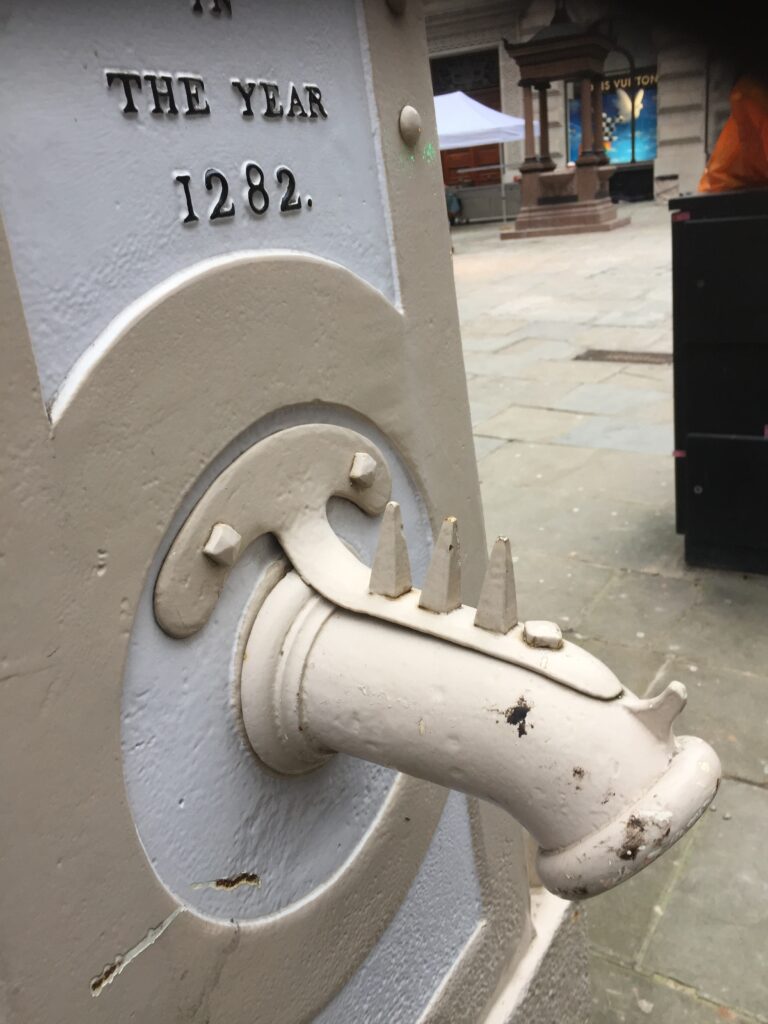
I am indebted to Metro Girl’s blog for this piece of fun trivia. The pump in it’s original blue state can be seen in the climax of the first Bridget Jones’s Diary movie, where Renee Zellweger’s Bridget enjoys her first kiss with Colin Firth’s Mark Darcy after he buys her a new diary from the Royal Exchange …

In the shadow of St Paul’s Cathedral this old Parish Pump, dated 1819, bears the name of St Faith’s Parish despite the fact that the church after which it was named was demolished in 1256 (yes, over 700 years ago) to allow for the eastern expansion of St Paul’s.
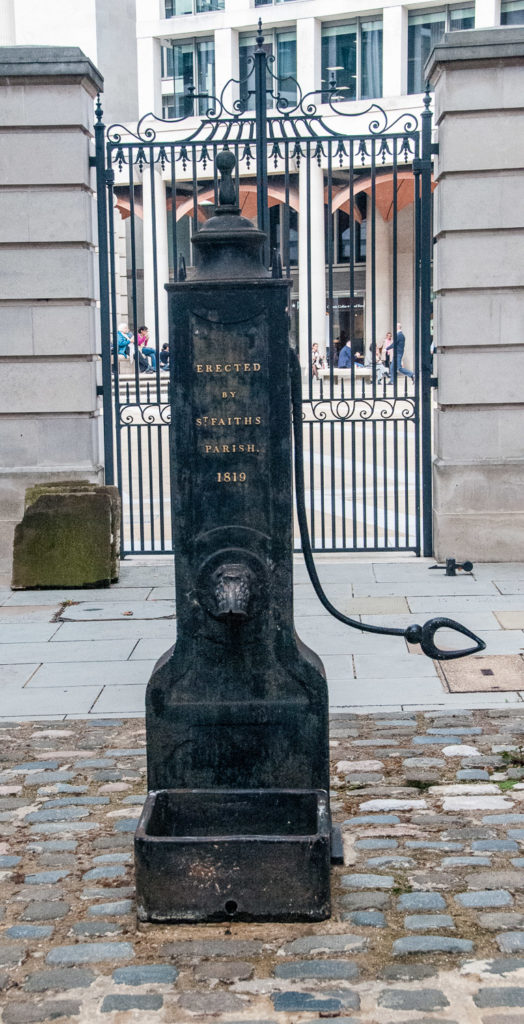
From the 1250s until the reign of Edward VI, the parish known as St Faith under St Paul’s literally worshiped beneath St Paul’s Cathedral, using a space the end of the west crypt under St Paul’s Quire. After the Great Fire of 1666 the parish was united with St Augustine Watling Street. The pump was once situated against railings of St Paul’s Churchyard close to St Paul’s Cross, but was moved to its present position in 1973.
The old parish still has a boundary marker on the wall of St Paul’s Cathedral School …
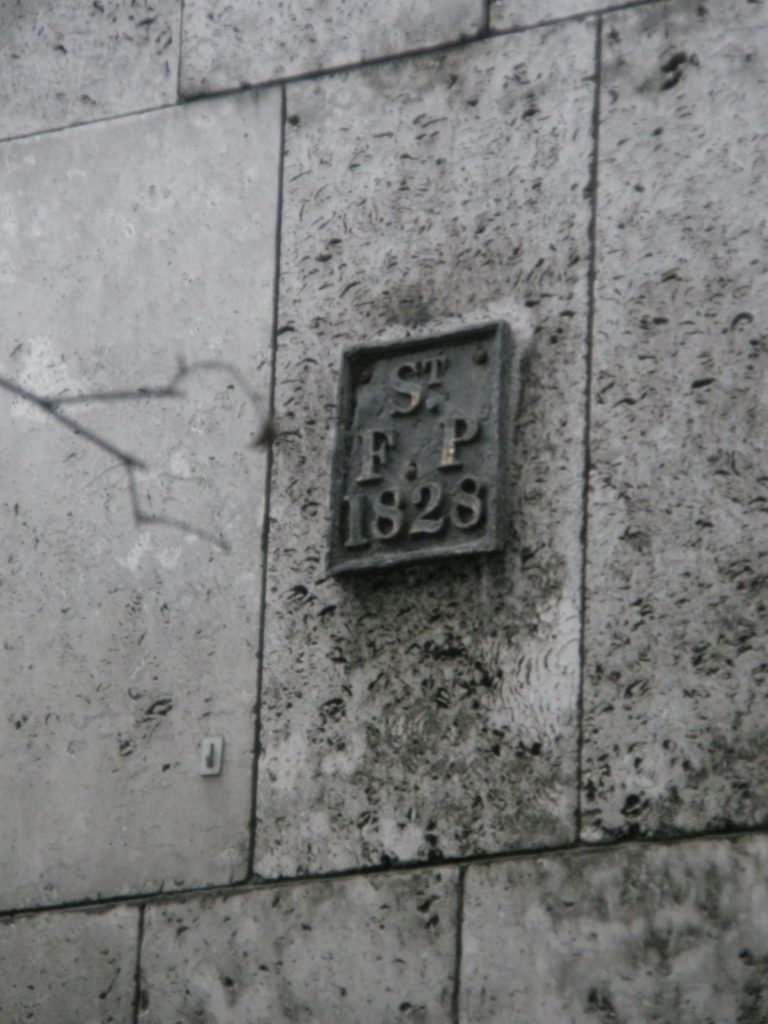
I’m very fond of Aldgate pump and its wolf’s head spout so, although I wrote about it just over a year ago, I hope regular readers will forgive me for writing about it again. At the junction of Fenchurch Street and Leadenhall Street people usually hurry past it without a second glance, not knowing anything about some gruesome aspects of its history …
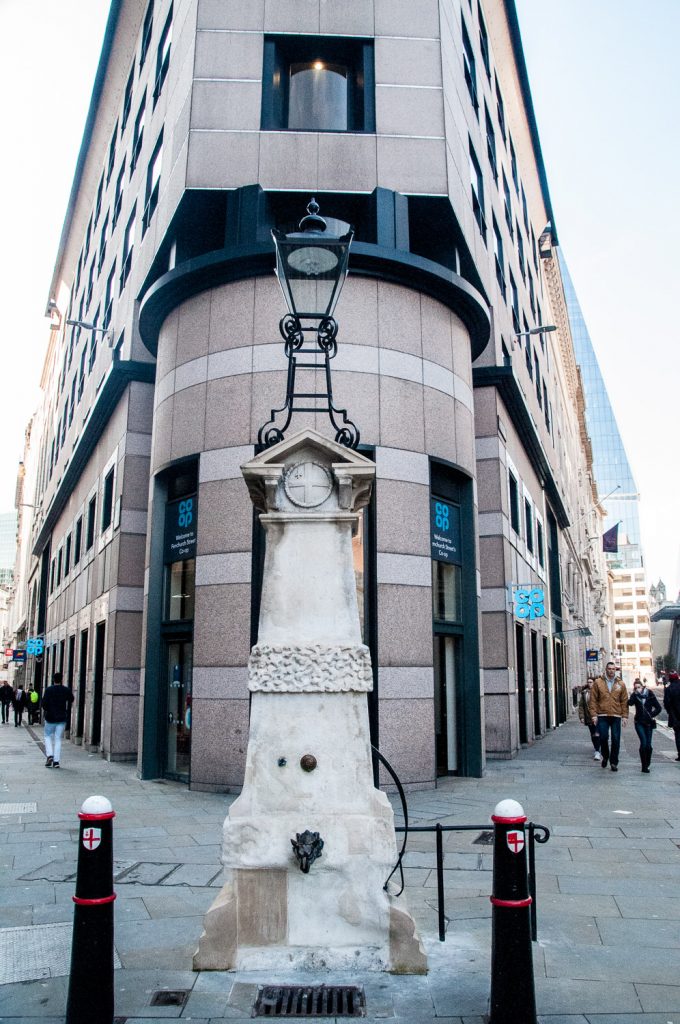
There was a well here for centuries and one appears to be shown on the Agas map of 1561 …
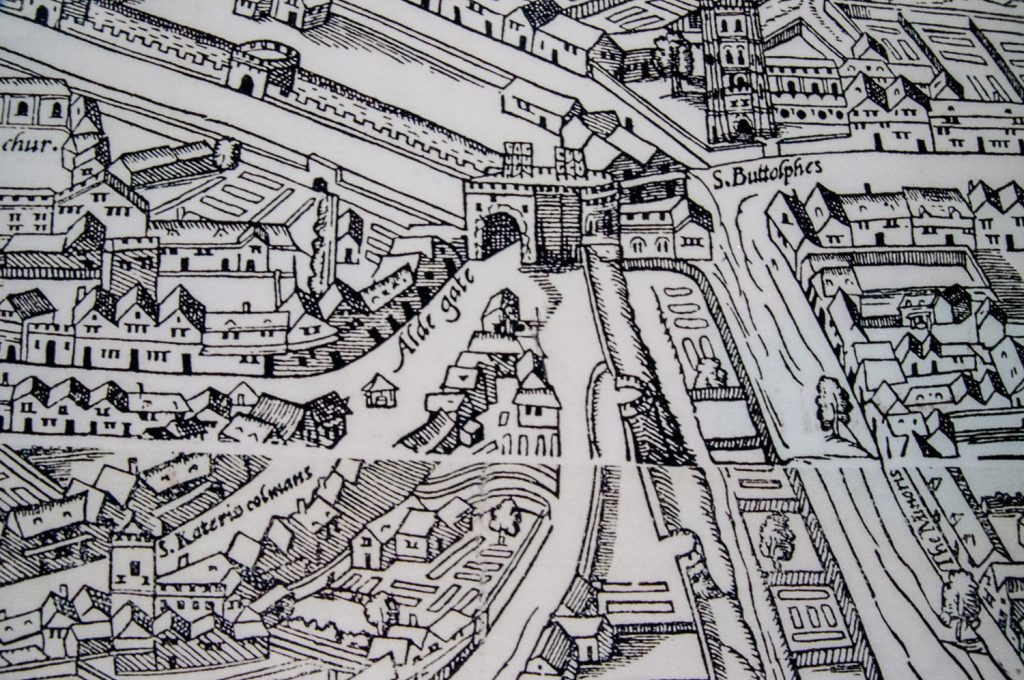
After a pump was installed in the sixteenth century the water gained a reputation for being ‘bright, sparkling, and cool, and of an agreeable taste’. In the early 1870s, however, people started noticing the taste deteriorate and become foul. Then people who had drank the water started dying in great numbers in a tragedy that became known as the Aldgate Pump Epidemic.
It was known that Thames water was dangerous as illustrated by this 1850s drawing entitled The Silent Highwayman …

But Aldgate water originated in the healthy springs of Hampstead and Highgate and flowed underground – so it should have been safe.
The bad news broke publicly in April 1876 …

An investigation by the Medical Officer of Health for the City revealed the terrible truth. During its passage from north London it had passed through and under numerous new graveyards thereby picking up the bacteria, germs and calcium from the decaying bodies. The pump was immediately closed and eventually reconnected to the safer New River Company’s supply later in 1876. You will find a fascinating history of the New River Company if you access the splendid London Inheritance blog.
The epidemic was obviously a distant memory by the nineteen twenties when Whittard’s tea merchants used to …
… always get the kettles filled at the Aldgate Pump so that only the purest water was used for tea tasting.
I have discovered a few old pictures …
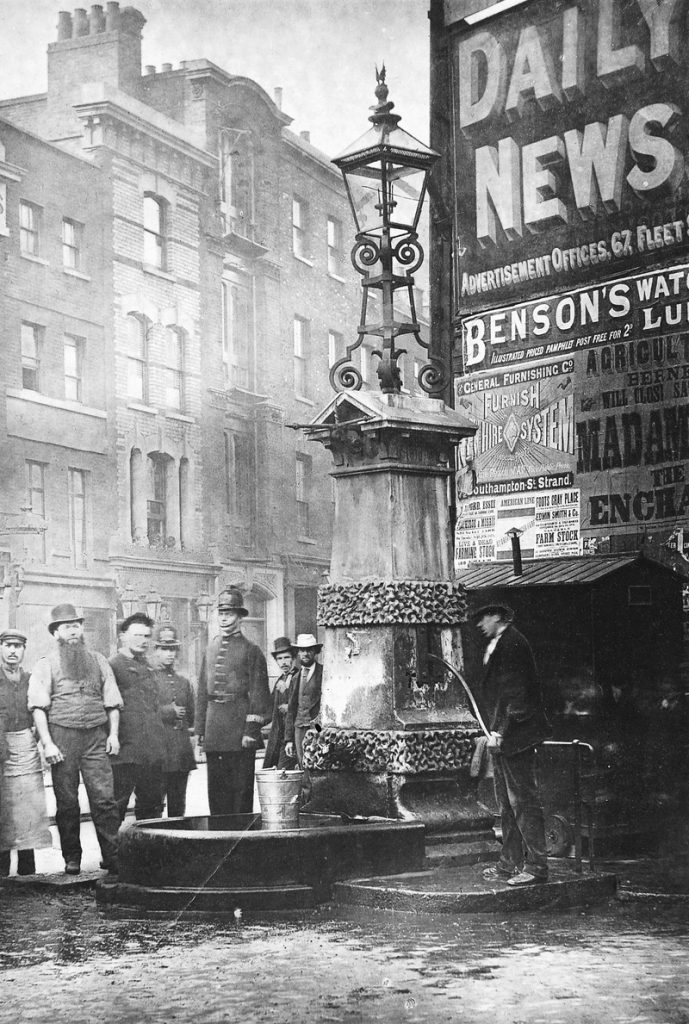
And in August 1908 a little bare footed East End boy refreshes himself using the cup attached to the pump by a chain …
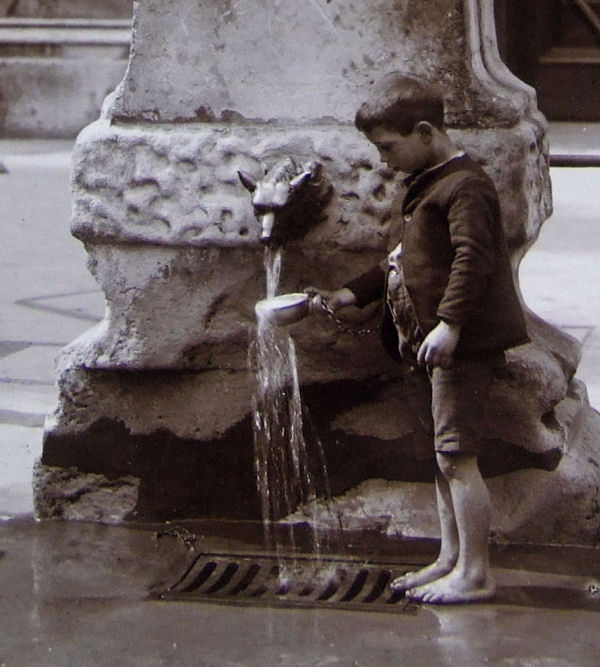
In the full picture his pal is doing the pumping …

The wolf’s head spout is said to reference the last wolf killed in the City of London …
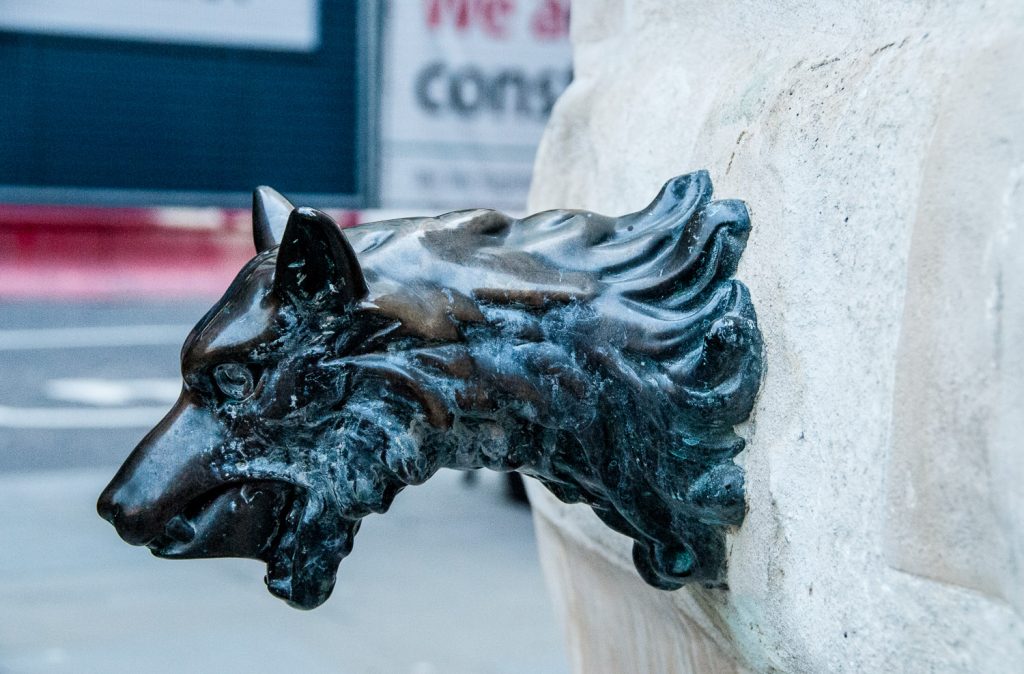
Outside Tesco’s on Cheapside is this intriguing manhole cover …
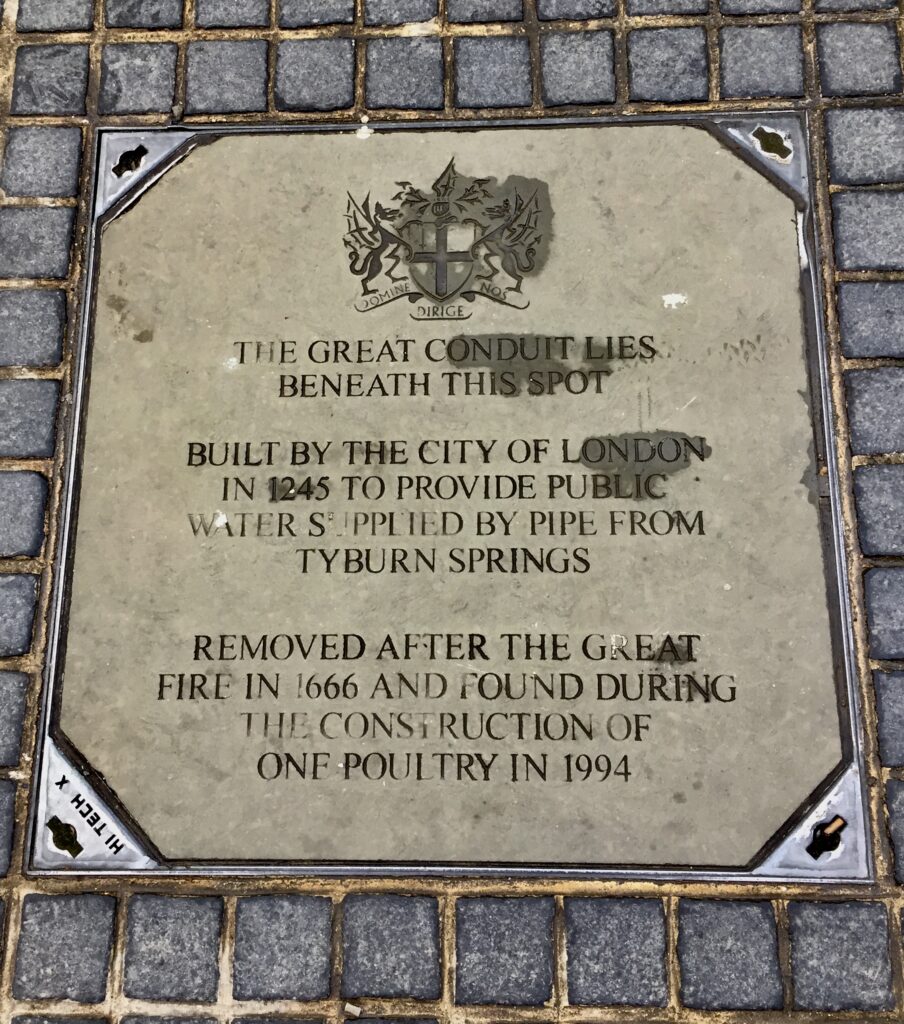
For a fascinating talk by Chris Dyson about this and other aspects of the City’s water supply history click here : This City is Made of Water.
Also worth reading is this article in Square Mile Health Walks and the Gentle Author’s blog entitled The Pumps of Old London.
And there’s my blog from almost four years ago: Philanthropic Fountains.
If you would like to follow me on Instagram here is the link …
